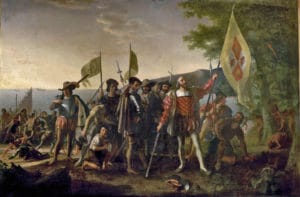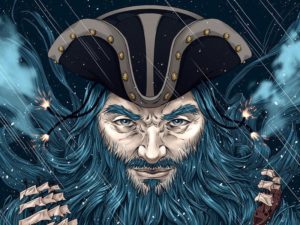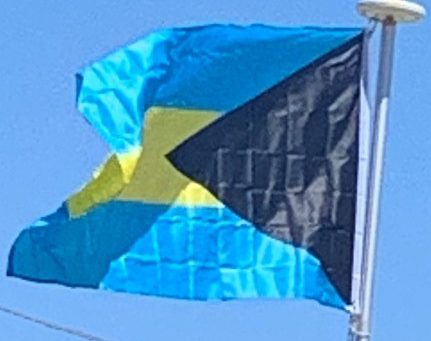Columbus’s first landfall in the New World was on an island he named San Salvador (known to the Lucayans as Guanahani). Some researchers believe this site to be present-day San Salvador Island (formerly known as Watling’s Island), situated in the southeastern Bahamas. An alternative theory holds that Columbus landed to the southeast on Samana Cay, according to calculations made in 1986 by National Geographic writer and editor Joseph Judge, based on Columbus’s log. Evidence in support of this remains inconclusive. On the landfall island, Columbus made first contact with the Lucayans and exchanged goods with them.

The Spanish forced much of the Lucayan population to Hispaniola for use as forced labor. The slaves suffered from harsh conditions and most died from contracting diseases to which they had no immunity; half of the Taino died from smallpox alone. The population of the Bahamas was severely diminished.
In 1648, the Eleutherian Adventurers, led by William Sayle, migrated from Bermuda. These English Puritans established the first permanent European settlement on an island which they named Eleuthera—the name derives from the Greek word for freedom. They later settled New Providence, naming it Sayle’s Island after one of their leaders. To survive, the settlers salvaged goods from wrecks.
In 1670, King Charles II granted the islands to the Lords Proprietors of the Carolinas in North America. They rented the islands from the king with rights of trading, tax, appointing governors, and administering the country.[18] In 1684 Spanish corsair Juan de Alcon raided the capital, Charles Town (later renamed Nassau). In 1703, a joint Franco-Spanish expedition briefly occupied the Bahamian capital during the War of the Spanish Succession.
18th–19th Centuries:
During proprietary rule, the Bahamas became a haven for pirates, including Blackbeard (circa 1680–1718). To put an end to the ‘Pirates’ republic’ and restore orderly government, Great Britain made the Bahamas a crown colony in 1718 under the royal governorship of Woodes Rogers. After a difficult struggle, he succeeded in suppressing piracy. In 1720, Rogers led local militia to drive off a Spanish attack.

During the US War of Independence in the late 18th century, the islands became a target for US naval forces under the command of Commodore Esek Hopkins. US Marines occupied the capital of Nassau for a fortnight or 2 weeks.
In 1782, following the British defeat at Yorktown, a Spanish fleet appeared off the coast of Nassau. The city surrendered without a fight. Spain returned possession of the Bahamas to Great Britain the following year, under the terms of the Treaty of Paris. Before the news was received, however, the islands were recaptured by a small British force led by Andrew Deveaux.
After US independence, the British resettled some 7,300 Loyalists with their slaves in the Bahamas, including two thousand from New York and at least 1,033 whites, 2,214 blacks and a few Creeks from East Florida. Most of the refugees resettled from New York had fled from other colonies, including West Florida, which the Spanish captured during the war. The government granted land to the planters to help compensate for losses on the continent. These Loyalists, who included Deveaux, established plantations on several islands and became a political force in the capital. European Americans were outnumbered by the African-American slaves they brought with them, and ethnic Europeans remained a minority in the territory.
